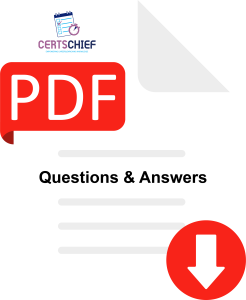Unlocking the Power of Python as a Scripting Language for Professionals
“`html Exploring the Versatility of Python as a Scripting Language Python, with its elegant syntax and flexibility, has emerged as a favorite among professionals across


$49.00
Preparing for the Registered Physical Therapist (RPT) exam can be both a challenging and rewarding journey. This pivotal step in your career requires dedication, comprehensive understanding, and strategic planning. In this article, we will delve into the essential aspects of conquering the rpt pdf dumps, from study strategies to key concepts that will ensure your success.
Before embarking on your study journey, it’s crucial to familiarize yourself with the exam’s structure, content areas, and weighting. This foundational understanding will guide your study plan and ensure you allocate sufficient time to each topic.
Developing a well-structured study schedule is paramount. Designate specific time slots for each content area, allowing for focused study sessions. Implement the Pomodoro technique, dedicating 25 minutes of intense studying followed by a 5-minute break to maintain optimal concentration.
Dive deep into core concepts, including anatomy, biomechanics, patient assessment, therapeutic interventions, and ethical considerations. Utilize textbooks, online resources, and practice exams to reinforce your understanding and identify areas that require more attention.
The RPT exam assesses not only your knowledge but also your clinical reasoning skills. Practice case scenarios to enhance your ability to analyze patient conditions, identify appropriate interventions, and make informed decisions under pressure.
Anatomy and Biomechanics (RPT Exam)
A solid grasp of anatomy and biomechanics is fundamental for any physical therapist. Focus on major body systems, joints, and muscles, understanding their functions and interactions. Highlight the importance of proper alignment, movement patterns, and postural stability in preventing injuries and promoting recovery.
Patient Assessment and Diagnosis (-RP-T)
Efficient patient assessment sets the stage for effective treatment. Learn the art of conducting thorough evaluations, including history-taking, functional tests, and specialized assessments. Recognize red flags, make accurate diagnoses, and develop patient-centered treatment plans.
Therapeutic Interventions (-RP-T Exam)
Explore a range of therapeutic techniques, from manual therapy and therapeutic exercises to modalities like ultrasound and electrical stimulation. Understand the indications, contraindications, and evidence-based applications of each intervention. Emphasize the significance of individualized treatment approaches tailored to patients’ needs.
Ethics and Professionalism (RPT)
Ethical considerations are integral to the practice of physical therapy. Familiarize yourself with codes of conduct, legal regulations, and patient confidentiality. Cultivate strong communication skills, empathy, and cultural competence to build trusting relationships with patients and their families.
Engage in mock exams and practical simulations to mimic the actual testing environment. This not only boosts your confidence but also helps you manage time effectively and practice applying your knowledge in a high-pressure scenario.
The path to becoming a registered physical therapist through the RPT exam requires a combination of diligent studying, hands-on practice, and critical thinking. By structuring your study approach, mastering core concepts, and honing your clinical reasoning abilities, you can confidently tackle the exam and embark on a fulfilling career in physical therapy. Remember, success on the RPT exam is not only a testament to your knowledge but also a reflection of your commitment to the well-being of your future patients.
Twitter– https://twitter.com/certschief_com
You must be logged in to post a review.
No recently updated products found.
“`html Exploring the Versatility of Python as a Scripting Language Python, with its elegant syntax and flexibility, has emerged as a favorite among professionals across
The Significance of Being a Databricks Certified Professional Data Engineer In the fast-evolving landscape of data engineering, staying ahead of the curve is crucial for
How to Prepare for the H19-435_V1.0 Exam Preparing for the H19-435_V1.0 exam can be a challenging task, especially for busy professionals with competing priorities. However,
The Importance of Effective Management in Planning and Inventory Management In today’s fast-paced business environment, effective management plays a crucial role in the success of
Elevate Your Career with ARA-C01 Exam Certification Reach new heights in your career by earning the ARA-C01 exam certification and opening doors to exciting opportunities!
Advancing Your Career with PL-200 Certification from Certschief If you’re seeking career advancement opportunities as a professional, exploring the PL-200 exam certification from Certschief could
Grab 16 USD Discount using Coupon: 5QV25AH7 Dismiss
Grace Hall –
Kudos to CertsChief for their excellent services. The questions and answers are a fantastic study aid, and the practice exams are a true test of your knowledge. Don’t hesitate to use them!